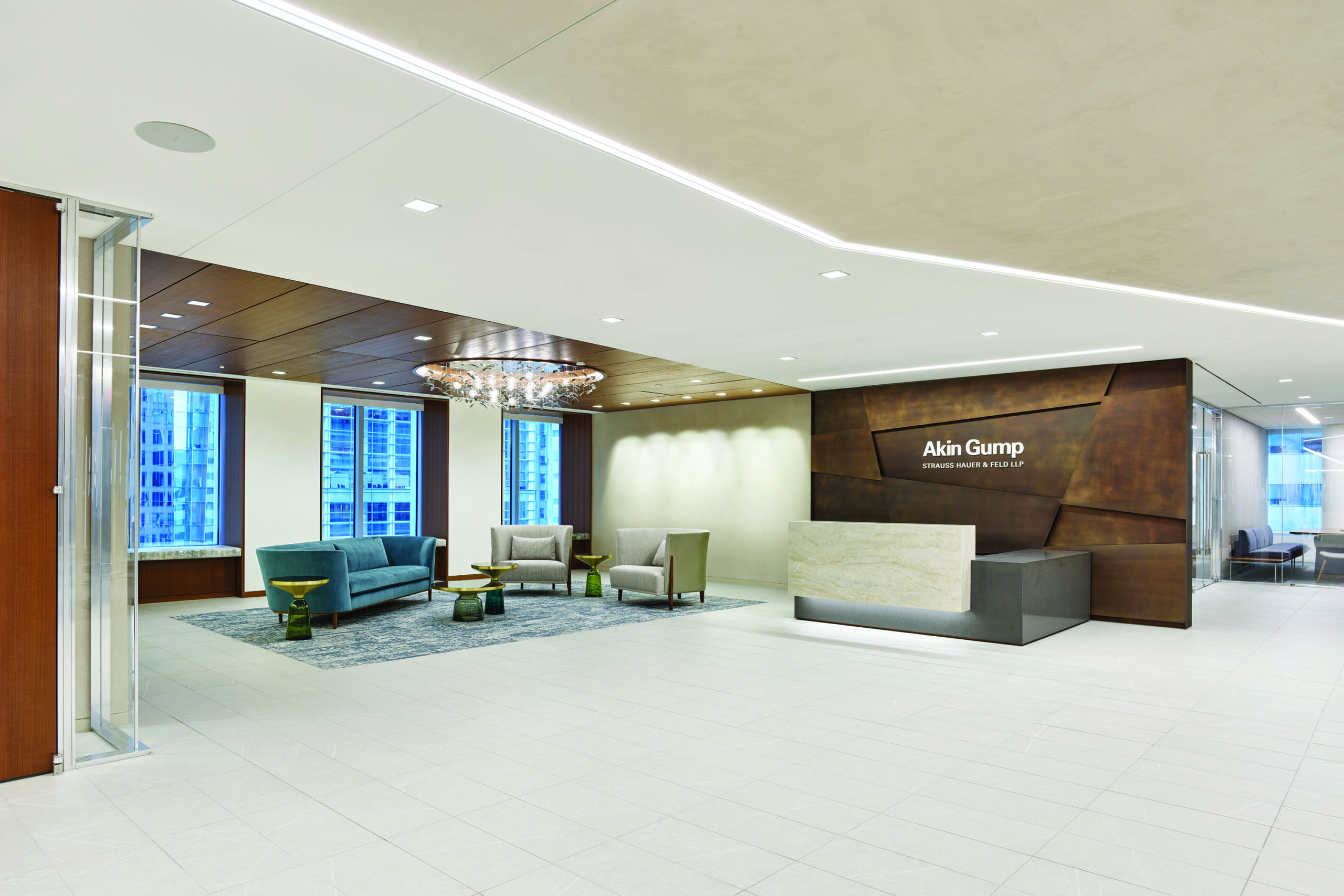As design trends come and go, law firms have historically stuck to a more traditional workplace aesthetic that is, in many cases, rooted in more than a century of legacy. However, with unprecedented challenges and shifts in workplace dynamics in the last several years, some trends are emerging.

“Our business really got started with law firms,” says Mallory Wall, project executive at BCCI Construction in San Francisco. “For the last 35+ years, we’ve delivered several law firm projects every year. Each law firm has its own unique needs and wants, but in that time, we’ve also seen some consistency across the sector, especially with all the uncertainty in the workplace since the pandemic.” The big question? How to handle the return to the workplace since COVID. Many sectors have begun to adjust to a new, more flexible business model. The legal sector hasn’t quite settled on how to handle it. “Other businesses are gearing their offices more toward creating spaces for employees to come in for collaborations and meetings only while they do their day-to-day work from home,” says Luke Thomas, director of operations at Structure Tone Philadelphia. “Law firms haven’t typically been as open to that kind of change, but we are starting to see it in their projects.” One reason, says Wall, is the competition for talent. “Law firms are losing recruits as big tech firms hire them directly. Because we work with both tech firms and law firms, we’re able to offer some advice on what they can do to communicate a more modern vibe that’s most like that of a tech company.”
THE SHIFT
Even before the pandemic, law firms were starting to incorporate more café spaces and casual collaboration areas. With added pressure to convey an attractive culture, law firms are taking those amenities to a higher level. As crazy as it sounds, says Wall, asking employees what they want can be the most effective means for attracting and keeping staff. “Many of our clients have been torn about whether to stick with tradition or branch out into more trendy workplace features. We suggest they survey their staff to ask what they think. They’re often shocked to find out it’s not usually about having ping pong tables or bean bag chairs, but more things like nicer restrooms or more lounge areas and break-out rooms. Those smaller upgrades can have a big impact on culture.”
THE LESSONS
As the companies within the STO Building Group have continued to help law firm clients navigate this paradigm shift in the workplace, it became obvious they could learn from and help each other. And so, the organization’s law firm initiative was born. Representatives from across STOBG’s 14 companies, including BCCI and Structure Tone, meet on a regular basis to discuss trends, share lessons learned, and connect the dots for clients looking to upgrade or build offices in other cities. For some clients, the benefits are already clear. “We have a great relationship with Gunderson Dettmer,” says Wall. “When they mentioned they were going to start a project in Austin, Texas, we were able to introduce them to our Structure Tone Southwest team and stay involved and engaged throughout the project.” The same goes for negotiating the mounting challenges of the supply chain. STO Building Group’s procurement experts track trends and issue a monthly report on which materials are experiencing supply chain delays and which may be easing. The entire STOBG network has been able to bring that intelligence to their project teams to help inform decision-making. “The information a team in one city has been able to share with colleagues in other locations has undoubtedly benefitted our clients’ processes,” says Eugene White, STO Building Group executive vice president and leader of the firm’s law firm initiative. “From supply chain challenges to local market nuances, it’s been extremely helpful to have that level of expertise behind our local teams. Advancing lessons learned from one project to another has helped us ensure more predictable outcomes.” The efficiencies a client gains from working with this network of experts creates a win-win situation for everyone. “The client has a great experience, and we get to establish even stronger relationships with our sister companies,” says Wall. “Our clients tell us it’s just like working with the local team they know and love.”
THE FUTURE
Although the crystal ball does show a few changes in the future of law firm design and construction, law offices will undoubtedly continue to reflect legacy, reputation, and professionalism. The trick is finding just the right balance.
“Gone are the days of the traditional law firm,” says Wall. “We’re in a transition period, and culture will be key.”
Luke Thomas agrees. “I believe law firms will move into creating more amenity spaces for everyone and less hierarchy in terms of designing extravagant offices for attorneys. The change will be slow, but they’re getting there.”
